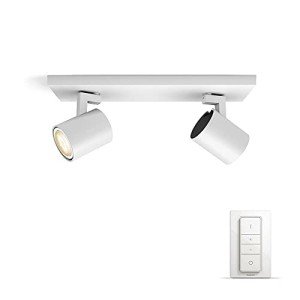Shop Lighting UK: Illuminating the Retail Experience
In the ever-evolving world of retail, the significance of shop lighting can not be overemphasized. It not just improves the aesthetic appeal of items but likewise influences consumer habits, their state of mind, and the total shopping environment. With advancements in technology and style, shop owners in the UK have a myriad of alternatives to select from when it comes to lighting options. This article will explore the kinds of lighting readily available, their benefits, and considerations for producing the best ambiance in a retail area.
Value of Proper Shop Lighting
Efficient shop lighting plays an important function in consumer experience and can considerably affect sales. Here are some crucial reasons appropriate lighting is essential for retail environments:
- Highlighting Products: Good lighting accentuates products, making them more appealing to customers.
- Producing Atmosphere: The right lighting can set the state of mind and stimulate feelings, affecting getting choices.
- Enhancing Safety: Well-lit shops are more secure, assisting consumers browse without risk of tripping or mishaps.
- Improving Visual Merchandising: Proper lighting can boost display screens, making them dynamic and attractive.
Kinds Of Shop Lighting
Shop owners can pick from numerous types of lighting, each serving different purposes, consisting of ambient, task, accent, and decorative lighting. Here's a breakdown of each type:
| Type of Lighting | Description | Best Uses |
|---|---|---|
| Ambient Lighting | Provides general lighting to the area. | General retail locations like stores and supermarkets. |
| Task Lighting | Focuses on specific locations to enhance visibility for tasks. | Checkout counters and dressing rooms. |
| Accent Lighting | Emphasizes particular items or displays, creating a centerpiece. | Show cases, art, or advertising items. |
| Decorative Lighting | Adds visual appeal and boosts the general decoration. | Chandeliers and unique fixtures in high-end stores. |
1. Ambient Lighting
Ambient lighting is the foundational illumination within a shop. It fills the entire area, making sure that clients can see and browse easily. Merchants ought to think about utilizing LED panels or ceiling-mounted fixtures, as they provide energy performance and exceptional light circulation.
2. Job Lighting
Job lighting is crucial for areas where particular activities take place, such as checkout counters or workstations. Shop owners can install under-cabinet lighting or track lights to focus lighting on these locations, enhancing the convenience and experience for both staff and customers.
3. Accent Lighting
Accent lighting helps draw attention to particular items or functions within the store. This kind of lighting can be achieved through spotlights, track lights, or strategically positioned wall-mounted fixtures. It is especially efficient for showcasing featured products, promotional screens, or art work, guiding customer focus where it's most required.
4. Decorative Lighting
Beyond performance, decorative lighting aspects add design and character to a retail space. Special fixtures, such as pendant lights or oversized chandeliers, can create an unforgettable environment, especially in stores or high-end retailers. These statement pieces not only light up however likewise enhance the shop's branding and visual appeal.
Picking the Right Lighting for Your Shop
When selecting lighting for a retail environment, shop owners need to think about the list below elements:
- Store Type: Different types of retail need varying lighting services. A jewelry store may need softer, more focused lights, while a supermarket may require brighter ambient lighting.
- Color Temperature: The color of light can impact the perception of items. Warm lights (under 3000K) develop a comfortable feel, while cool lights (above 3000K) can make a space feel more contemporary.
- Energy Efficiency: The usage of LED lighting not only saves energy but also lowers expenses gradually.
- Flexibility: Install dimmers or adjustable fixtures to adapt lighting for various occasions or seasonal modifications.
The Future of Shop Lighting
As innovation progresses, shop lighting is ending up being increasingly advanced. Here are some patterns forming the future of retail lighting in the UK:
- Smart Lighting Solutions: Integrated technology enables remote control and automation of lighting systems via smart devices or home assistants.
- Sustainable Lighting: There is a growing focus on eco-friendly options, with merchants go ing with items that reduce ecological impact.
- Centerpiece Lighting: Retailers are significantly using lighting to create specific focal points that assist consumer traffic and enhance product screens.
FAQs about Shop Lighting in the UK
Q: What is the very best type of lighting for a clothes store?A: A combination of
ambient and accent lighting is generally best. Ambient lighting is required for total exposure, while accent lighting can assist highlight essential pieces or collections. Q: How can I make my shop lighting more energy-efficient? A: Consider using LED lights, installing motion sensing units, or incorporating
dimmers. This lowers energy consumption and expenses in the long run. Q: Should I utilize natural light in my shop?A: Yes, using natural light can enhance client experience whilereducing energy costs. However, it is essential to stabilize natural light with artificial lighting, specifically on cloudy days. Q: How typically need to I change my shop's lighting fixtures?A: This depends upon the type of fixtures used. LED lights can last up to 25,000 hours, while traditional bulbs
might need to be changed more often. Routine maintenance checks are recommended. In an increasingly competitive retail environment, shop lighting plays an invaluable function in shaping client experiences and driving sales. Retailers in the UK have a large variety of alternatives and technologies at their disposal to create the best ambiance. By understanding the value of the different types of lighting and how to execute them efficiently, shop owners can boost their area, making shopping more pleasant for consumers while increasing their bottom line.

